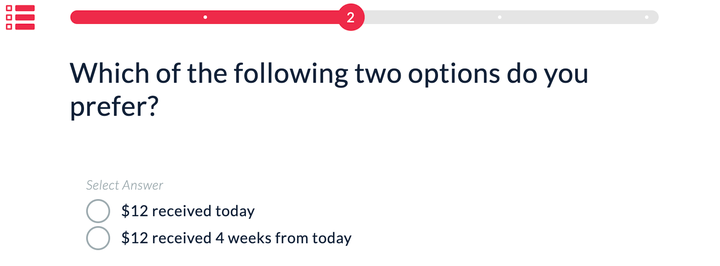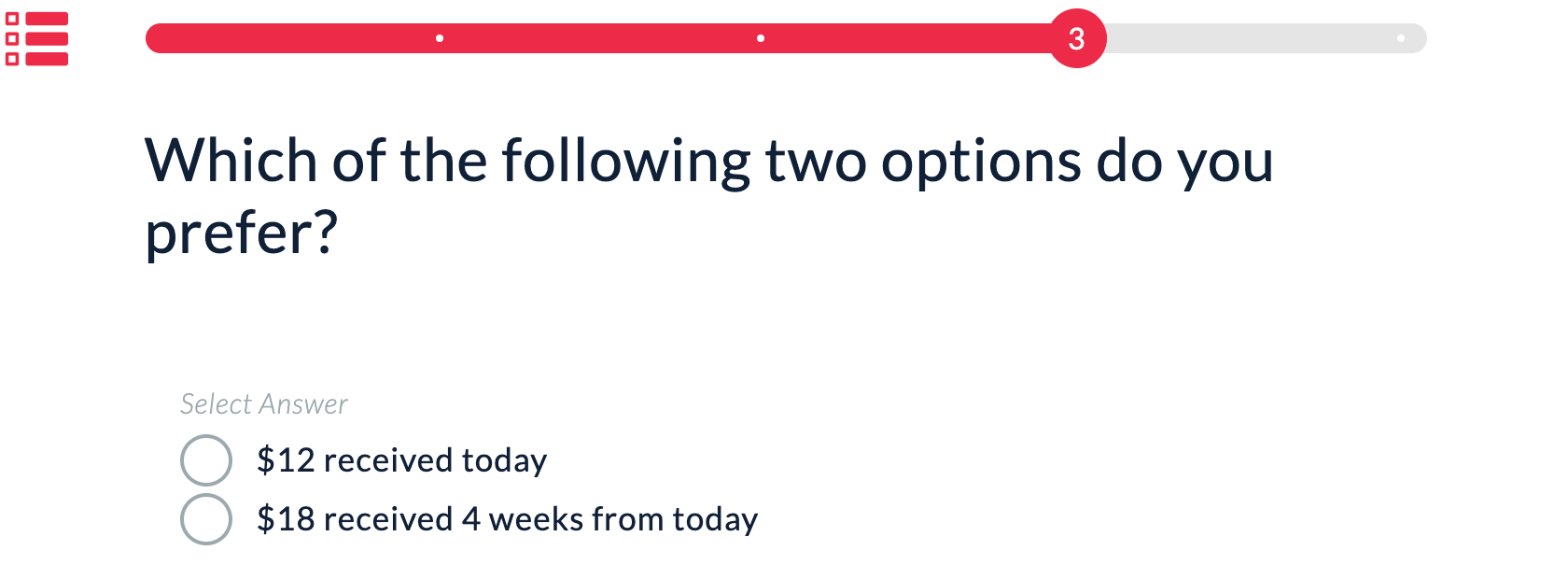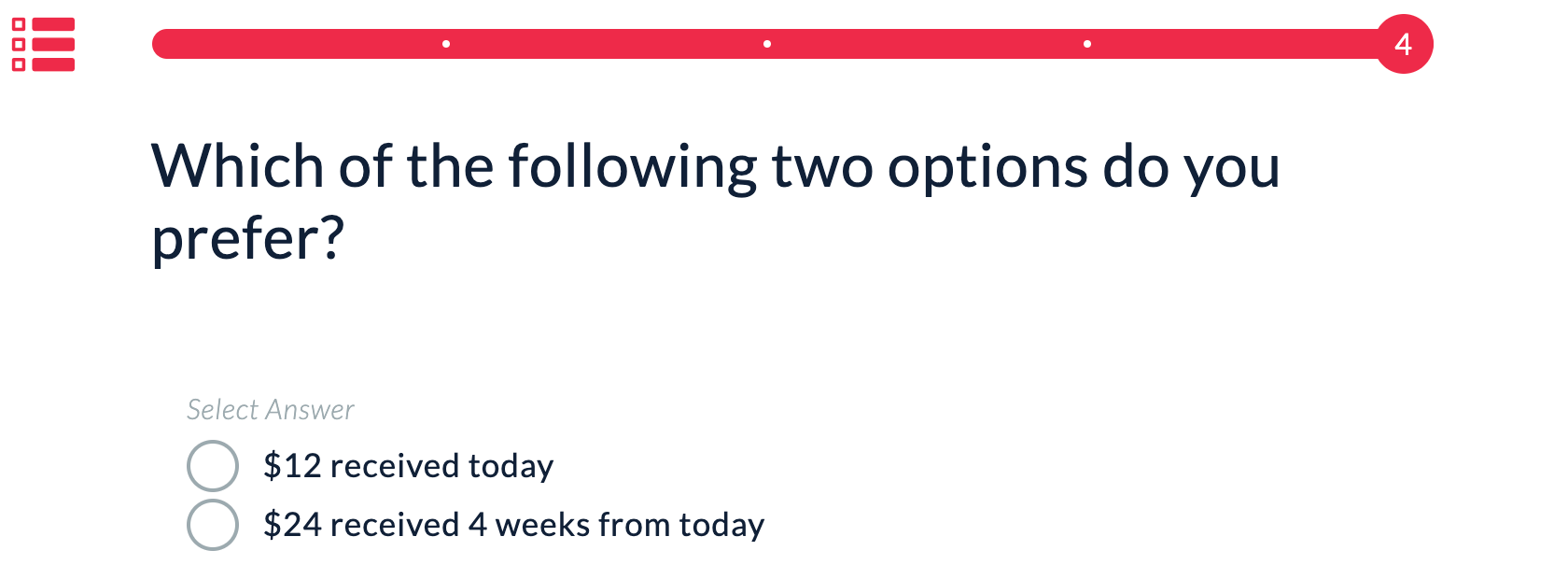Within behavioral economics, there are several cognitive biases to be studied. One of the most popular cognitive biases is hyperbolic discounting. The basic idea behind hyperbolic discounting is that individuals want instant gratification more than a larger reward they have to wait for in the future. As illogical as it may seem, individuals often choose the smaller short-term reward. Even though the “later” reward may be greater, the individuals are discounting its value and thus they prioritze the option that will give them immediate satisfaction.
Why does hyperbolic discounting matter? The idea that individuals can be swayed to choose instant gratification has huge implications for consumer behavior. Many corporations use tactics to capitalize on this idea of hyperbolic discounting. Offers like “spend $50 to receive free shipping” encourage the consumer to seek that instant reward of free shipping by spending more money, rather than waiting for a time when the larger purchase is more justified. The concept of hyperbolic discounting can be seen everywhere if you look closely enough. Teaching these cognitive biases empowers your students to assess values and make appropriate decisions for themselves.
At MobLab, our survey tool offers a host of pre-made question banks or blank surveys that you can customize to help teach your students about hyperbolic discounting and other economic concepts. When teaching your students about hyperbolic discounting, you can explain this cognitive bias by putting them to the test to see whether hyperbolic discounting has an influence on them when decision-making. Using MobLab’s blank survey, you can create a poll for students and walk them through a hyperbolic discounting example. For instance, you might offer your students a choice between $100 today or $150 next week. Now, your students might pick $100 today because even though $150 is more than $100, they will have to wait a week to receive it! This may make the value of the $150 seem lower to your students. With this simple question, you have shown your students that they may be discounting future values, though it may seem illogical, even to them.
Another great and even easier way of introducing hyperbolic discounting to your students is by running our “Time Preferences: Binary Choice” survey that will reveal whether or not your students are discounting future rewards. Students will be asked a series of questions about their time preferences (as seen below). You can experiment with increasing or decreasing amounts in each question to see if there are changes in how your students discount future rewards.



Once you have the answers compiled, you can start a discussion about the time preferences your students have shown. Are they discounting the future? Or are they acting without any cognitive biases? With the survey results, you can also check for consistency amongst the answers. Are students always operating with a constant rather a declining rate of time preference? Or are they choosing their monetary pay out based solely on how much money they will receive? A discussion on hyperbolic discounting can really get your students to think about their biases and how it impacts their decision-making.
With MobLab, you can put your students into mini experiments to show them their own cognitive biases, like hyperbolic discounting, and start meaningful discussions about a variety of behavioral economics topics. Check out our games and surveys to see how MobLab fits into your class.
Want to learn more? Get in touch with our team! We are eager to set it up for your class.
Why does hyperbolic discounting matter? The idea that individuals can be swayed to choose instant gratification has huge implications for consumer behavior. Many corporations use tactics to capitalize on this idea of hyperbolic discounting. Offers like “spend $50 to receive free shipping” encourage the consumer to seek that instant reward of free shipping by spending more money, rather than waiting for a time when the larger purchase is more justified. The concept of hyperbolic discounting can be seen everywhere if you look closely enough. Teaching these cognitive biases empowers your students to assess values and make appropriate decisions for themselves.
At MobLab, our survey tool offers a host of pre-made question banks or blank surveys that you can customize to help teach your students about hyperbolic discounting and other economic concepts. When teaching your students about hyperbolic discounting, you can explain this cognitive bias by putting them to the test to see whether hyperbolic discounting has an influence on them when decision-making. Using MobLab’s blank survey, you can create a poll for students and walk them through a hyperbolic discounting example. For instance, you might offer your students a choice between $100 today or $150 next week. Now, your students might pick $100 today because even though $150 is more than $100, they will have to wait a week to receive it! This may make the value of the $150 seem lower to your students. With this simple question, you have shown your students that they may be discounting future values, though it may seem illogical, even to them.
Another great and even easier way of introducing hyperbolic discounting to your students is by running our “Time Preferences: Binary Choice” survey that will reveal whether or not your students are discounting future rewards. Students will be asked a series of questions about their time preferences (as seen below). You can experiment with increasing or decreasing amounts in each question to see if there are changes in how your students discount future rewards.



Once you have the answers compiled, you can start a discussion about the time preferences your students have shown. Are they discounting the future? Or are they acting without any cognitive biases? With the survey results, you can also check for consistency amongst the answers. Are students always operating with a constant rather a declining rate of time preference? Or are they choosing their monetary pay out based solely on how much money they will receive? A discussion on hyperbolic discounting can really get your students to think about their biases and how it impacts their decision-making.
With MobLab, you can put your students into mini experiments to show them their own cognitive biases, like hyperbolic discounting, and start meaningful discussions about a variety of behavioral economics topics. Check out our games and surveys to see how MobLab fits into your class.
Want to learn more? Get in touch with our team! We are eager to set it up for your class.

